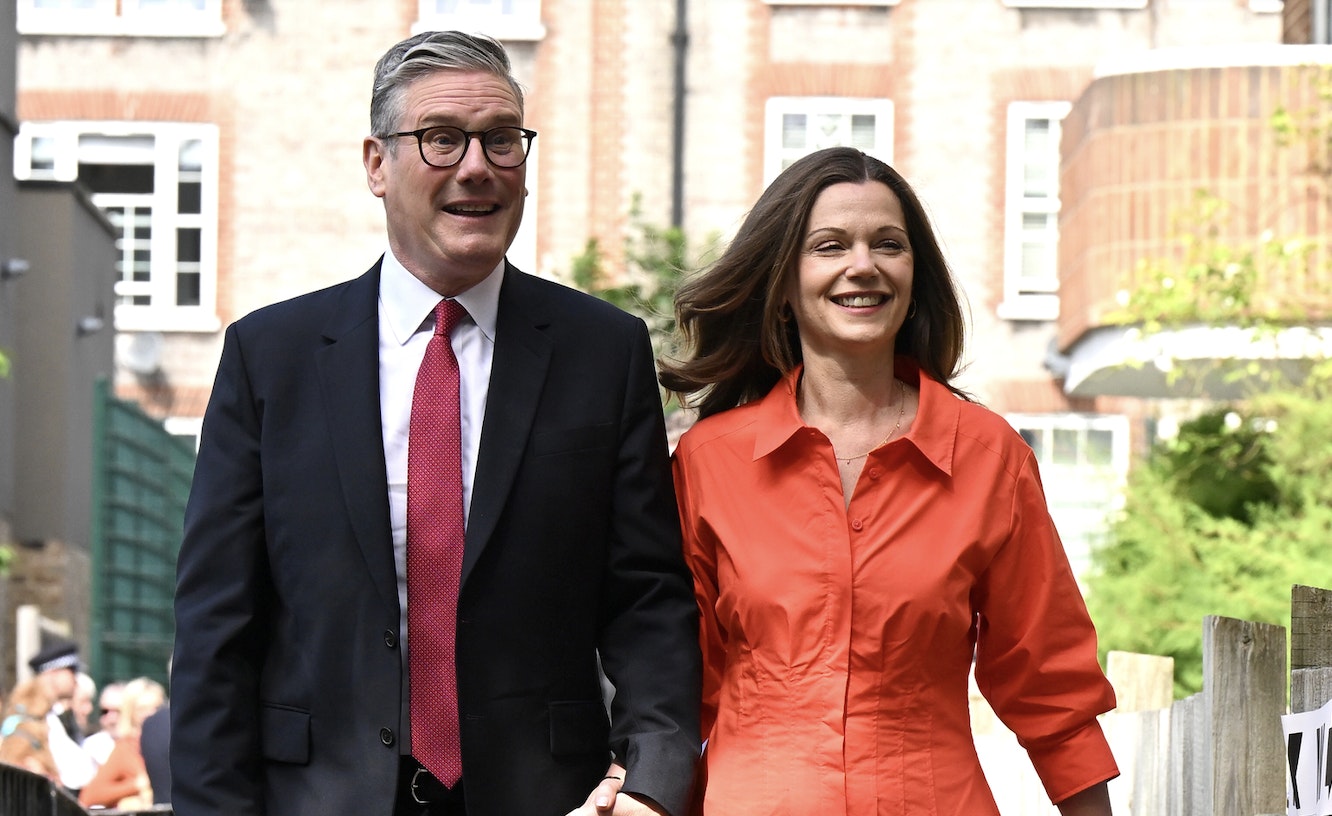
WHY DO POLITICIANS ALWAYS TAKE A LITERAL APPROACH TO GETTING DRESSED?
The Barbie promo trail was an unstoppable hype machine, piloting a whole new approach to the red carpet called 'method dressing'. At its centre was its real-life Barbie, Margot Robbie, who wore a masterfully curated wardrobe of designer looks based on original designs worn by the doll herself. Was it a lot of pink? Yes. Did it most likely help to deliver a barn-storming box-office performance? Almost certainly.
A UK General Election offers almost none of the fun of Barbie - and thank goodness it came out last year lest our leader decided to do a rendition of I'm Just Rishi - but its 'main characters' know a thing or two about method dressing. Or in layman's terms, wearing party colours.
For men, this roughly translates as wearing a tie or a jumper that's the colour of your party. So far, so pedestrian, although you can hardly blame them for wanting to avoid getting butchered in the fashion pages as well as everywhere else (ahem, Sunak wearing Sambas). For women, as demonstrated all those years ago by the mistress of political method dressing, Margaret Thatcher, it involved an immersive approach, where one's jacket matched one's power dress, which matched one's pumps.
At the polls this morning, there was plenty of literal dressing on show, albeit of a slightly less confronting nature. The Prime Minister arrived in his constituency, Kirby Sigston in North Yorkshire, in casual mode - a white collared shirt worn underneath a half-zip blue jumper. (His wife, interestingly, wore a paisley-print dress of red and blue. Conceding defeat or refusing to be restricted? The jury's out.) The Starmers, meanwhile, went for a more obvious approach, turning up to cast their votes in varying shades of red (Victoria's dress is still available to buy from Simkhai, although it's a slightly deeper shade of crimson.)
But if it's all so obvious, why do it in the first place? 'It is about recognisability, but also much more,' says Dr Carolyn Mair, behavioural psychologist, fashion business consultant and author of The Psychology of Fashion. 'Politicians wear party colours to portray political affiliation and create a strong, unified identity that makes it easy for the public to recognise and distinguish between candidates and parties.' In other words, if you're knocking on people's doors and asking for their vote, it helps if they immediately know who you represent.
Does it work? Could being exposed to a candidate's red ensemble, say, on televised debates or the evening news, night after night, actually swing your vote? Dr Mair says it's possible. 'Repetitive exposure to party colours primes the subconscious mind, strengthening the cognitive associations between the colour and the party's values and ideologies. Once strengthened, these associations can enhance voter loyalty and sway undecided voters by creating a sense of familiarity and trust.'
Let the results roll in...
Natalie Hammond is Grazia’s Senior Fashion News Editor. She loves winter, hates summer and can often be found writing about the weather (and what on earth to wear).